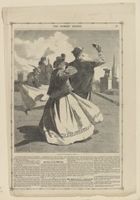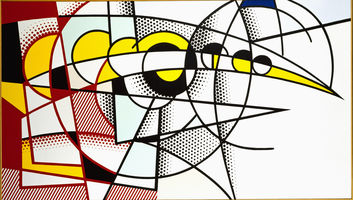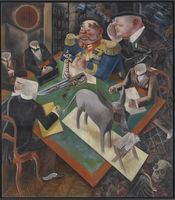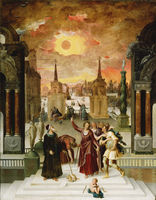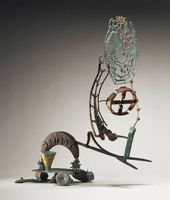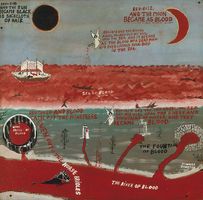The Small Crucifixion
Matthias Grünewald, German, ca. 1475/80–1528
The Small Crucifixion, ca. 1511/1520
Oil on panel
Courtesy National Gallery of Art, Washington D.C., Samuel H. Kress Collection
1961.9.19
Matthias Grünewald may have found inspiration to paint The Small Crucifixion in the total solar eclipse of October 1, 1502. The Gospels have associated the eclipse with the Crucifixion, and it has thus become symbolic with the despair surrounding Christ’s sacrifice. Grünewald’s affiliation with Christian mysticism often influenced his work. Mystics believed in seeking an ecstatic and intimate relationship with Christ, often using visual aids such as The Small Crucifixion. Between the heightened emotions of mysticism and his Mannerist influences as seen in the distorted figures, Grunewald sets a precedent for the fierce, emotive techniques of twentieth century German Expressionism.
Here, the moon appears twice. On the left side, we see a stylization of a lunar eclipse, when the moon turns a dusky red; the blackness of a solar eclipse darkens the right side. Pesellino offers a different interpretation of the Gospel of Luke than Grünewald and is perhaps also an interesting comparison to the work by Howard Finster, which also shows the eclipse and the moon separately.







